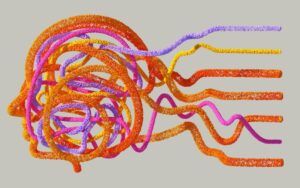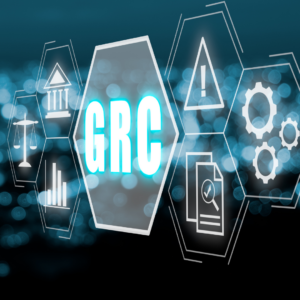
Art Clomera
Vice President, Operations
Anyone responsible for protecting an agency’s IT infrastructure recognizes the immense challenge of identifying and managing risks effectively, given the complexity, scale, and rapid changes in today’s threat landscape.
But settling for ineffective strategies that leave critical assets vulnerable isn’t an option. In the high-stakes world of federal cybersecurity, where “you can’t defend what you can’t see,” proactive solutions are essential to rooting out these blind spots.
By integrating cybersecurity into an integrated risk management approach, you can gain a clear, organization-wide view of risks. This will empower you to make better decisions and enhance your agency’s security posture. But what does integrated risk management actually mean if you’re a federal agency?
What is Integrated Risk Management (IRM) for Federal Agencies?
Integrated risk management offers a unified approach that federal agencies can use to identify, assess, and manage risks in an organization. Compared to siloed risk management strategies, IRM connects all risk management functions. What you get is end-to-end visibility into potential cybersecurity and operational threats.
Integrated Risk Management (IRM) is vital for federal agencies as it aligns the protection of critical assets with broader risk management goals. Instead of addressing risks individually, IRM promotes a holistic approach, enhancing collaboration between operational leaders and IT security teams.
This strategy helps agencies make informed decisions and efficiently manage risks while supporting compliance with regulations and governance standards. Ultimately, IRM fosters a flexible risk management culture, improving the protection of critical assets and operational efficiency in the face of evolving threats.
Key Components of an Integrated Risk Management Approach for Federal Agencies
Federal agency leaders face the triple challenge of 1) balancing complex missions, 2) managing diverse stakeholders, and 3) adhering to strict regulatory requirements. As a strategy to meet these demands, an integrated risk management approach is indispensable.
Let’s break down what a robust Integrated Risk Management (IRM) system looks like for government organizations:
Mission-Aligned Risk Identification
Start by identifying the risks that could impede your ability to achieve your core missions. For example, the Department of Veterans Affairs might assess risks in healthcare delivery, benefits processing, and veteran outreach.
The DVA’s integrated risk management approach would involve everyone in the agency, from top to bottom. This exhaustive approach leads to a fuller picture of the risks we face and how they fit into our overall goals.
Risk Assessment and Prioritization in a Public Service Context
Once you’ve identified your mission-aligned risks, it’s time to evaluate them and prioritize them within the unique context of public service.
Consider:
- The likelihood and impact of risks
- Their potential effect on public trust
- The agency’s ability to serve its constituents.
Many agencies employ sophisticated risk modeling techniques, such as Monte Carlo simulations, to assess complex, interrelated risks. FEMA, the Federal Emergency Management Agency, for example, uses models to evaluate disaster response capabilities across multiple scenarios.
Risk Response and Mitigation Strategies
Are you responsible for developing risk response strategies that align with your agency’s mission and public service obligations? Your integrated risk management program should include:
- To mitigate operational risks, implement robust internal controls, such as those mandated by OMB Circular A-123
- Identify potential collaborations with other agencies or levels of government, such as an inter-agency task force, to address shared risks
- Acknowledge risks inherent to the agency’s mission
- Eliminate or modify programs or activities that pose unacceptable risks
Continuous Monitoring and Adaptive Management
Ongoing risk monitoring and adaptation are cornerstones of any integrated risk management approach. For instance, the Environmental Protection Agency would continually adjust its integrated risk management approach based on new scientific data, evolving environmental challenges, and changes in public policy priorities.
They would require:
- Leveraging data analytics to track key risk indicators (KRIs) specific to agency operations
- Conducting regular risk assessments, often aligned with budget cycles or strategic planning processes
- Adapting risk management strategies in response to emerging threats, changing public needs, or new legislative mandates
By focusing on these components, federal agencies can build a strong integrated risk management program that helps them stay on mission, maintain public trust, and responsibly manage taxpayer resources in today’s increasingly complex risk environment.
10 Benefits of an Integrated Risk Management Approach for Federal Agencies
Over-securing systems can slow mission-critical operations by delaying access to essential data. While under-securing leaves agencies vulnerable to cyberattacks, regulatory non-compliance and curveball disruptions such as the problematic CrowdStrike update. An integrated risk management (IRM) approach helps by aligning mission-critical security measures with mission-critical s risks, ensuring high-risk areas are well-protected without causing operational bottlenecks.
Adopting an integrated risk management approach offers other crucial advantages to federal agencies:
1. Cross-Agency Risk Visibility
Integrated Risk Management (IRM) encourages government agencies to collaborate across departments to tackle threats more efficiently. For example, cybersecurity experts might join forces with border security officials to discuss how digital threats could affect physical operations.
Instead of addressing risks in isolation, agencies can develop broader strategies that simultaneously address multiple vulnerabilities. This is a win-win: resources are used more effectively, and agencies are better equipped to handle complex, interconnected challenges.
2. Data-Driven Decision Making
Federal agencies face complicated, often overlapping issues that require thoughtful consideration. IRM unifies risk data from various sources, providing decision-makers with the necessary insights. For instance, an IRM system could help NASA leaders evaluate the risks of different space missions, balancing budget concerns with public safety and leading to more informed, justifiable decisions.
3. Streamlined Operations and Resource Allocation
By identifying overlaps and inefficiencies in risk management processes, IRM helps federal agencies optimize their operations. The Social Security Administration, for instance, might use IRM to streamline its fraud detection processes across different benefit programs, reducing redundant efforts and freeing up resources for other critical tasks.
4. Enhanced Regulatory Adherence
Federal agencies must complete mission objectives within a complex web of laws, regulations, and executive orders. IRM helps agencies like the Securities and Exchange Commission maintain robust compliance frameworks by integrating compliance requirements with broader risk management efforts. This integrated approach ensures compliance isn’t treated as a separate function but woven into the agency’s overall risk strategy.
5. Higher Public Trust and Accountability
A well-executed IRM program demonstrates to Congress, oversight bodies, and the public that a federal agency is proactively managing risks and responsibly stewarding taxpayer resources. For example, the Department of Energy’s comprehensive approach to risk management in its nuclear facilities can help maintain public confidence in the safety and security of these critical installations.
6. Better Interagency Collaboration
An integrated risk management program facilitates better cooperation between federal agencies by providing a common language and framework for discussing and addressing risks. This can be particularly beneficial in areas requiring multi-agency responses, such as disaster management or cybersecurity threats.
7. Agile Response to Emerging Threats
By creating a continuous risk awareness and assessment culture, IRM enables federal agencies to adapt quickly to new challenges. For instance, the CDC can leverage an integrated risk management program to swiftly identify and respond to emerging public health threats, adjusting its strategies as new information becomes available.
8. Greater Regulatory Adherence and Compliance Management
Federal agencies must complete missions within a complex web of laws, regulations, and executive orders. IRM provides a structured approach to managing compliance requirements, reducing non-compliance risk and associated penalties.
For example, it helps agencies like the Securities and Exchange Commission maintain robust compliance frameworks by integrating requirements with broader risk management efforts. This approach aligns well with the NIST Risk Management Framework, ensuring compliance is woven into the agency’s overall risk strategy.
9. Cost Savings and Crisis Prevention
By identifying and mitigating risks early, IRM can lead to significant cost savings. It helps prevent costly incidents and reduces resources needed for crisis management. For instance, early identification of potential security vulnerabilities in IT systems can prevent expensive data breaches and associated recovery costs.
10. Strengthened Resilience to Disruptions
An integrated Risk Management approach helps agencies build stronger resilience, allowing them to better handle and bounce back from disruptions like cyberattacks, natural disasters, or other crises. IRM aligns with NIST’s recommendations for organizational resilience and continuity planning. In the end, a well-executed IRM strategy enables federal agencies to carry out their missions more efficiently, effectively, and transparently, even as the risk landscape becomes more complicated.
Six Steps to Implementing an Integrated Risk Management Approach for Federal Agencies
Rolling out an integrated risk management system in a federal agency requires a systematic approach tailored to the unique challenges of government operations:
1. Conduct a Comprehensive Risk Management Audit
Begin with a thorough evaluation of your agency’s current risk management practices. This audit should span all departments and programs, identifying areas of strength and vulnerability. The Government Accountability Office (GAO) provides guidelines for such assessments, which can serve as a valuable starting point. You can download the GAO PDF here.
For instance, the Department of Agriculture might review its risk management processes across food safety inspections, rural development programs, and forest management. The audit would expose inconsistencies in risk assessment methods or gaps in communication between different agency branches.
2. Develop a Tailored Risk Management Framework
Your risk management framework should align with your agency’s mission and statutory requirements. It should incorporate relevant federal guidelines, such as those outlined in OMB Circular A-123, while addressing your agency’s unique risk profile.
For example, the National Institutes of Health would consider risks in research grant allocation, oversight of clinical trials, and public health policy recommendations. Their integrated risk management program would balance scientific rigor with public accountability and ethical considerations.
3. Cultivate a Risk-Aware Agency Culture
Embedding risk awareness into your agency’s culture is crucial. This goes beyond mere policy compliance; it’s about allowing every employee, from senior leadership to front-line staff, to understand their role in managing risk.
But getting here isn’t a box-ticking exercise. It’s about creating a culture where everyone gets why it matters. The Transportation Security Administration, for example, could run hands-on training sessions where staff worked through real-world scenarios. This way, when a team member spots something off at a checkpoint, they’re not just following a rulebook—they understand the why behind their actions and can make better decisions to mitigate the risk.
4. Leverage Appropriate Risk Management Technologies
Federal agencies often spend extensive time and resources achieving Authorization to Operate (ATO) under the NIST Risk Management Framework (RMF). Manual methods can lead to burnout, with teams dedicating months to analysis, planning, testing, and continual monitoring. IPKeys’ RMF automation solutions address these challenges by streamlining the entire process, making it faster, more efficient, and less error-prone.
By leveraging advanced, DoD-optimized technologies, federal organizations can improve their integrated risk management approach while reducing the operational burden on their teams. Learn more about IPKeys’ innovative solutions and how they can help federal agencies achieve faster, more accurate risk management here.
5. Introduce Sustainable Monitoring and Development Procedures
Set up ongoing reassessment mechanisms to check whether your integrated risk management program is suitable and efficient and keep testing it against new scenarios. This should include regular reporting to the agency leadership and other oversight agencies.
For instance, the Environmental Protection Agency could consider integrating appointing quarterly risk assessment reviews with its environmental data reporting. These reviews would allow the agency to adjust its risk management strategies based on real-time conditions, taking into account new scientific findings and emerging ecological risks.
6. Coordinate the message with Stakeholders and Partner Agencies
Integrated Risk Management (IRM) often requires collaboration across multiple government agencies and interaction with external stakeholders in the federal setting. Information-sharing and risk management practices must be streamlined and standardized to enhance efficiency and improve communication with partners.
For instance, the Department of Homeland Security may settle on using cross-functional task forces to address systems whose vulnerabilities cut across different domains, such as cybersecurity and core infrastructure. The desired outcome would be to balance staying on top of risks without getting bogged down by procedure to focus on what really matters: serving citizens.
Top Tools and Technologies: Integrated Risk Management for Federal Agencies
Modern organizations can only define, evaluate and control risks across domains if they incorporate an integrated risk management system. This need becomes even more critical for federal agencies because of the central nature of government data and the numerous regulations involved.
It’s even more crucial to federal agencies due to the nature of the information shared by the government and the increasing compliance requirements. However, what tools and technologies are available to implement an integrated risk management approach aligned with federal goals and regulatory requirements?
Governance, Risk, and Compliance (GRC) Platforms
GRC platforms are web-based platforms that provide a central place for an organization to set and implement its governance, risk, and compliance strategies. These platforms also assist in complying with regulatory norms, including FISMA for federal information systems and dealing with NIST guidelines and agencies’ pertinent requisites.
By integrating risk data from multiple sources, GRC platforms streamline processes, improve visibility, and enhance decision-making by integrating risk data from multiple sources. Learn more about 2024’s best GRC tools for federal agencies and their benefits.
Security Information and Event Management (SIEM) Systems
According to NIST, SIEM tools help gather security information from different parts of computer systems and present it in a way that’s easy to understand and use. In the federal context, SIEM tools are crucial in continuous monitoring, as mandated by FISMA. SIEM systems help government agencies spot potential cyber threats in real time, respond quickly to attacks, and ensure they follow strict protocols to protect government networks from harm.
Cybersecurity and Risk Management Tools
Cybersecurity and IT risk management tools are software that finds weak links and potential threats for federal agencies and uses control measures to mitigate such risks. These solutions frequently involve evaluating systems for susceptibility to attack or penetration testing and security sensitivity education for the federal workforce.
Most of these tools are meant to complement the Continuous Diagnostics and Mitigation (CDM) program, improving the security status of federal IT networks. Discover how IPKeys is helping secure the government from iterative cyber threats through cybersecurity and analytics services.
Continuous Monitoring and Assessment Tools
Federal agencies demand proven, continuous monitoring tools to protect sensitive data and stay on the right side of regulations like NIST SP 800-137. These tools offer real-time insights into security risks and threats, helping agencies quickly detect and respond to issues before the critical exposure window opens.
These tools enable smarter, risk-based decisions while ensuring compliance with frameworks like FISMA by supporting information security continuous monitoring (ISCM) efforts. Automating monitoring also reduces manual work, making cybersecurity more efficient and freeing teams for higher-level work to stay ahead of evolving threats.
Integrated Risk Management with IPKeys
We offer DoD-driven software solutions to help federal agencies implement integrated risk management programs. Agencies that partner with IPKeys strengthen their integrated risk management, maintain regulatory compliance and protect critical assets from emerging threats.
IPKeys’ advanced solutions, leveraging machine learning and AI, integrate seamlessly with federal IT infrastructures and support initiatives like FISMA compliance and NIST framework implementation.
For more information, visit our Cybersecurity and Analytics Services. Contact our team about integrated risk management solutions to support your mission.
FAQs
How does integrated risk management differ from traditional risk management for federal agencies?
An integrated risk management approach takes an organizational-wide approach to managing risks, breaking down silos between different risk management functions. Traditional risk management often operates in isolated departments. This creates blind spots and potential missed connections.
What are the common pitfalls to avoid when implementing integrated risk management for federal agencies?
Common pitfalls of an integrated risk management program include:
- Lack of top-level commitment: Senior leadership must champion the initiative.
- Insufficient risk-aware culture: Employees must be encouraged to identify and report risks.
- Inadequate technology: Appropriate tools are essential for effective risk management.
- Failure to monitor and improve: Ongoing monitoring and continuous improvement are crucial.
What are some examples of integrated risk management practices for federal agencies?
- Risk Identification and Assessment
An essential practice in integrated risk management is partnering with IT, compliance, and business departments to identify organizational risks. Quantitative and qualitative methods assess risks based on their impact and likelihood. - Risk Mitigation Strategies
Developing risk mitigation plans aligned with organizational goals ensures that risk management supports overall strategy. Incident response plans with clear procedures help provide a systematic approach to handling and recovering from threats. - Ongoing Monitoring and Reporting
Continuous monitoring is crucial for proactive risk management. Real-time tracking technology allows for quick responses to emerging risks, while automated reporting tools improve stakeholder communication by generating compliance reports. - Integration of Risk Domains
Combining operational, strategic, compliance, and cyber risks into a unified approach provides a comprehensive view, allowing organizations to understand interdependencies. Third-party risk management is also crucial as organizations increasingly rely on external partners. - Culture of Risk Awareness
Fostering a risk-aware culture ensures that employees actively identify and report potential risks. Regular risk management training and clear communication about risk appetite help ensure all staff align with the organization’s risk management strategy.
How can IRM help federal agencies improve their cybersecurity posture?
An integrated risk management approach empowers federal agencies to strengthen their cybersecurity by providing a holistic view of all potential threats. By combining cyber risk into the agency’s broader risk strategy, IRM allows federal agencies to identify vulnerabilities and respond swiftly and proactively to security breaches. With real-time tracking and automated alerts, federal agencies can ensure quicker responses, reducing the chances of cyberattacks and enhancing overall system security.
What role does technology play in IRM for federal agencies?
Technology is the backbone of a practical integrated risk management approach for federal agencies. Advanced platforms enable federal agencies to automate risk assessments, monitor threats in real-time, and generate compliance reports. These tools help agencies unify data across risk domains like cybersecurity and operations, improving decision-making and allowing the agency to respond swiftly to evolving risks while maintaining compliance.
How can federal agencies measure the effectiveness of their IRM programs?
Federal agencies can evaluate the success of their integrated risk management program by tracking key metrics such as the speed of risk mitigation, the number of incidents resolved, and compliance rates. Real-time risk monitoring and regular audits ensure their IRM strategies reduce vulnerabilities and meet organizational goals.
What key performance indicators (KPIs) are essential for integrated risk management?
Federal agencies can measure the success of their integrated risk management approach through KPIs, such as risk response times, compliance achievement rates, and reductions in cybersecurity incidents.
Other KPIs include financial losses due to risk, operational efficiency improvements, and the number of risks resolved. By tracking these metrics, federal agencies can ensure that their IRM programs effectively minimize threats and align with strategic goals.



